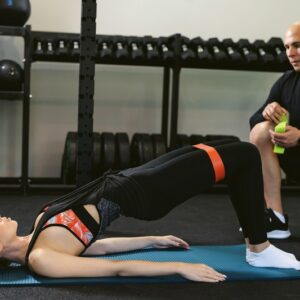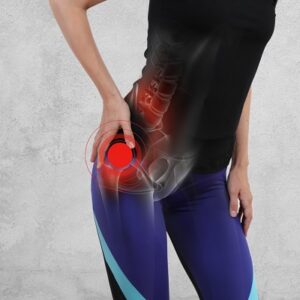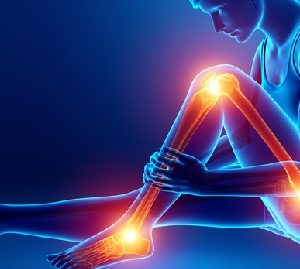Tips to Keep Walking When You Have Knee Pain
Is Your Knee Pain Making Daily Activities a Chore?
Knee pain can make daily activities a chore. Walking becomes a love/hate activity. Walking is recommended to help reduce symptoms by maintaining muscle mass, reducing blood pressure and also as a way to stay functional by maintaining joint mobility. Many people are tentative to start a walking program because they think it will create more knee pain!
Contrary to popular belief, walking doesn’t make symptoms worse. Daily structured walking programs reduce stiffness and inflammation. Walking is definitely an exercise that is preferred for people with osteoarthritis, it is always recommended to discuss any forms of exercise with your physician when you have a chronic condition. Walking not only helps with reducing pain and increasing joint flexibility; it also helps with bone density, increased speed and a better quality of life.
Walking can help to decrease overall health risks. According to the Arthritis Foundation “Walking lowers the risk of blood clots, since the calf acts as a venous “muscle pump”, contracting and pumping blood from the feet and legs back to the heart, reducing the load on the heart.”
How Does Walking Help the Knees?
The knee is a very intricately designed joint comprised of a series of tendons, ligaments, and meniscus (which is a crescent-shaped fibro-cartilaginous structure). Unlike muscles, cartilage doesn’t get its nourishment from blood, but instead relies on synovial fluid within the joint. Movement causes the release of synovial fluid into the joint, walking can lubricate the knee, reduce stiffness and provide nutrients to the cartilage.
Regular Exercise to Support the Knee
The function of muscle is to support and move the knee. Walking is a weight bearing activity which helps to increase bone density.
Before starting any exercise program, it is important to consult your doctor, physiotherapist or Orthopaedic surgeon to get medical clearance and specific guidelines for what is appropriate for your particular situation. Once you have received medical clearance, it would also be a good idea to hire an advanced personal trainer to assess your gait and design a program to balance the muscles surrounding the hip, knee and ankle.
Walking When You Have Knee Pain
The best rule of thumb is to monitor what your normal pain levels are during a day. Then ask yourself if your pain is more than 2 to 3 points higher than normal affects your movement patterns considerably. Should you be experiencing these problems then start off with a short, light walk to see if the pain increases or decreases. Sometimes going for a walk can reduce your pain and mobilize your joint fluid and lubricate the joint.
The day following your walk, monitor your pain levels on a scale of 1 – 10. When you are looking at 0/10 that would mean you have no pain at all, 5/10 would be that it is affecting your daily movement and 10/10(shot gun blast pain) would be severe pain which requires an immediate hospital visit. As long as your pain doesn’t increase by more than 1 to 2 points, then you are fine. However, it would be appropriate to take a day off between workouts to allow the knee to settle down to its regular level of pain.
Osteoarthritis quite often leaves you feeling torn. You have intense knee pain, so you don’t want to move, and then the pain gets worse from inactivity because the joint isn’t getting greased up with synovial fluid. You just need to know if you get up and move then eventually given time and increased stability, your knee will feel better. Exercise also gets you prepped for rehab, so you will heal better if you require a joint replacement!
Should you be experiencing severe pain, swelling or your knee starts to collapse, stop immediately and check back in with your health professional. She may suggest that you switch over your activity to riding a bike or swimming until the knee calms down. The key point is to continue to move and lubricate your joint.
Tips to Help You Achieve Success with a Walking Program
- Get fitted for shoes by a professional. Most people with knee pain should be wearing flat, flexible running shoes. They should be able to bend at the front of the foot, have a low heel to toe drop and have a wider toe box. Avoid, avoid, avoid high heels with pointy toes! Even low heels can create pressure on two common sites that cause osteoarthritis damage. Look for kitten heels or casual shoes for dress up or work attire.
- Wear orthotics made by a podiatrist if you need them. When you have knee problems you should avoid store made arch supports or shoes with high arches. Your foot should sit in a neutral position unless otherwise prescribed by a health professional so that you don’t create undo pressure on your knee.
- Warm up longer and lighter before a work out. Warm ups should include some active dynamic stretching to get your body ready for your intended activity. Check out this active dynamic exercise program or hire an advanced personal trainer to build one that is unique to your situation. Start off any exercise program slowly, spend about 10 minutes to allow the synovial fluid to lubricate the joint before testing it with higher intensity exercise.
- Take your time to build up your plan. Start with 5 to 10 minutes and use the wait and see method. Check out your pain levels on the next day to assess if you can add more time. You can add more time if you are not experiencing swelling or an intense increase in pain. Build up until you can manage 30 minutes of structured walking. Start with a comfortable pace and slowly build up speed as your knees allow you.
- Use Nordic poles or walking sticks. Nordic poles help to support the knees by transferring some of your body weight from the legs to the arms.
- Think the three T’s or in other words – treadmill, track or trail. Choosing softer walking surfaces decreases the amount of impact you are subjecting your knees to when you are trying to strengthen them.
- Step counting works, buy a pedometer or activity tracker. According to Daniel White, a research assistant professor in the department of physical therapy and athletic training at Boston University, someone with knee arthritis who is just starting to exercise, should set 3,000 steps as a first goal. His study of nearly 1,800 adults found that 6,000 steps was the threshold that predicted who would go on to develop disabilities or not. “If you wear a pedometer and get up to 6,000 steps, you’re in good shape,” White said. However keep in mind that you need to slowly increase your steps until you get to 6000 steps. Monitor your knee pain and swelling.
- PRICE still stands as a good rule of thumb. P – Protect or use the appropriate braces, shoes or poles. R – Rest, when you are experiencing pain or if you have muscle or joint soreness that is unusual for you situation, rest until your pain subsides to your usual levels. I – Ice your knee when there is swelling. Since knees are bony don’t ice more than 5 minutes every 2 to 3 hours. C – Compress or use a brace that has been prescribed by your doctor or physiotherapist. You can get special braces made that have off loaders that reduce the friction in your knee. Ask before you buy because you need one that is appropriate for your knee condition. E – Elevate your leg when you notice swelling! Elevation helps to take the pressure off your veins, encouraging the blood to flow and fluids out of your leg, thus reducing inflammation.
People newly diagnosed with a knee condition should first have an assessment and initial treatment done by a physiotherapist. Start with bike riding and swimming before beginning a walking program. Once you are ready to begin a walking and weight training program, hire an advanced personal trainer with experience and knowledge about rehabilitation. The goal with working out is to strengthen your knee and prolong the need for a knee replacement. The sooner you can develop muscle and strengthen the connective tissue, the more successful a knee replacement will be later on!
Good Luck and Happy Training
Cathie Glennon – BCRPA/SFL
References:
1) https://www.arthritis.org/living-with-arthritis/exercise/workouts/walking/wow-of-walking.php
2) https://www.verywell.com/tips-for-walking-when-you-have-bad-knees-4147680
3) https://www.webmd.com/osteoarthritis/features/knee-pain-walk#2
4) https://www.webmd.com/arthritis/news/20140612/can-6000-steps-a-day-keep-knee-arthritis-at-bay#1




